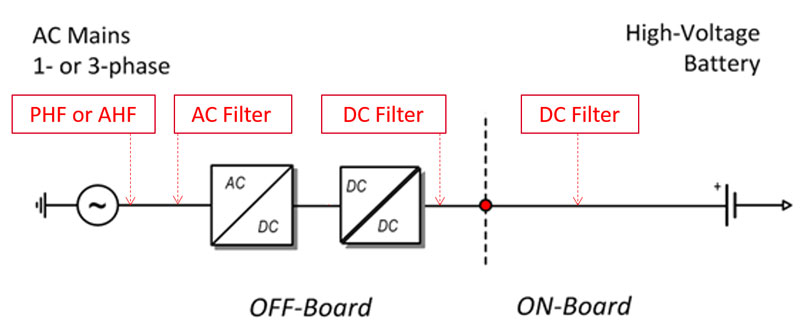What’s driving EMC in EV-Charging?
It’s not just plugging a connector in to your car and letting it charge. Here Holger Urban, Product Marketing Manager, Schaffner International AG discusses more. With the increasing demand of EV charging installations the International Electrotehnical Commission (IEC) is defining global standards which involve among other important aspects of EMC regulations and safety considerations.
This will not only ensure correct system interoperability but also considers conducted EMC emission levels on both sides of the charging stations.
From charging station to EV (CPT port):
- IEC61851-1 Electric vehicle conductive charging system
- Part 1: General requirements and
- Emission testing according to IEC61000-6-3
- Immunity testing according to IEC61000-6-1
- Part 21-1: EMC requirements for On-board charger connected to an AC/DC supply
- Part 21-2: EMC requirements for Off-board AC/DC charging system
- Part 23: DC charging station
- Part 24: Communication between DC charging station and EV
From charging station to grid/power source:
- IEC61000-6-2 & -3: EMC immunity and emission
- IEC61000-3-12: Electromagnetic compatibility (EMC) - Limits for harmonic currents
The IEC61851 standard is taking into account all types of off-board charging equipment, which can be used and installed in different locations. This standard covers all residential, commercial, light industrial (acc. IEC61000-6-1 and -3) and industrial environments (acc. IEC61000-6-2 and -4), irrespective of whether the equipment is located indoor or outdoor. Should the environment not be defined, the lowest emission limits and the highest immunity test levels will be applied.







